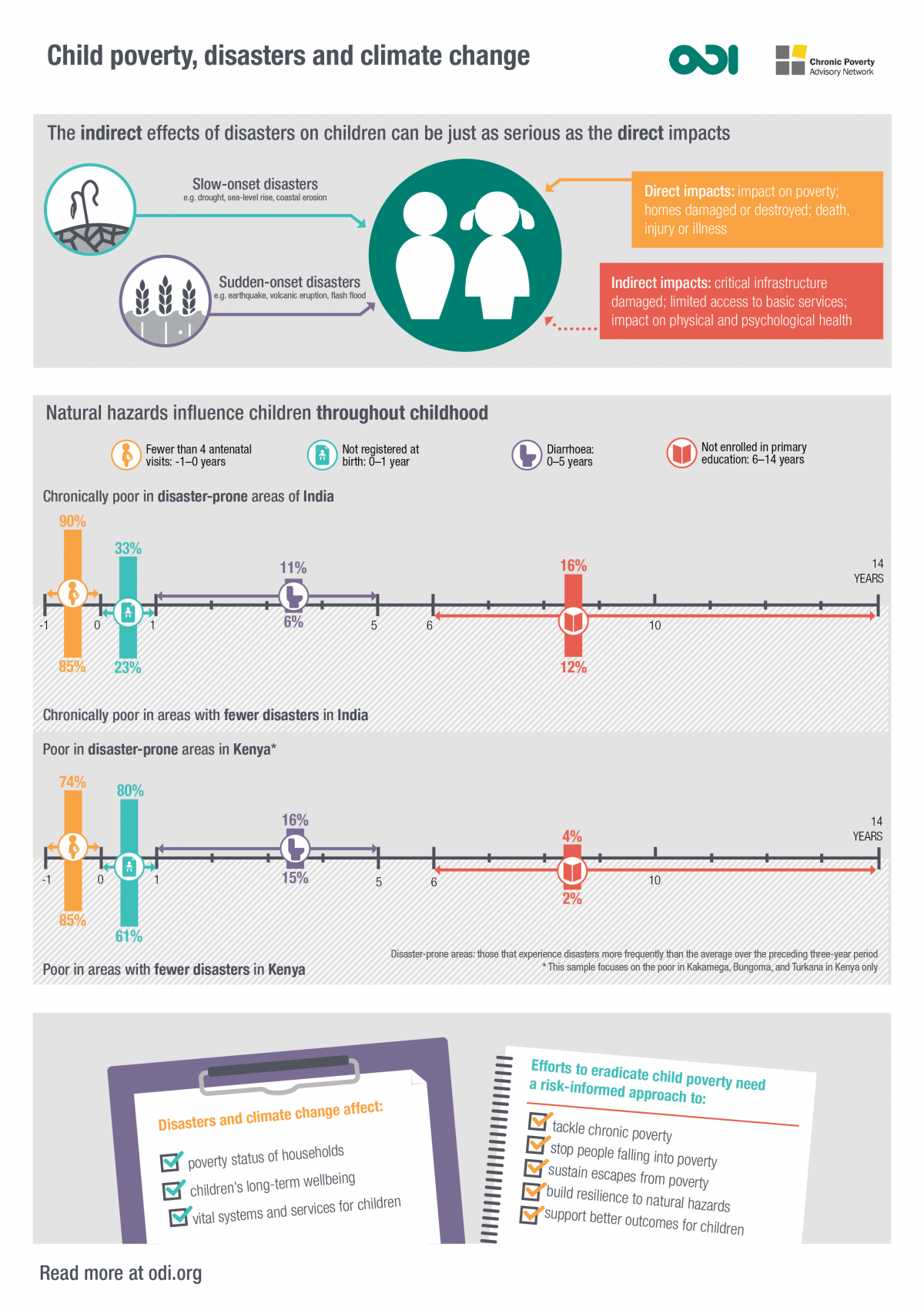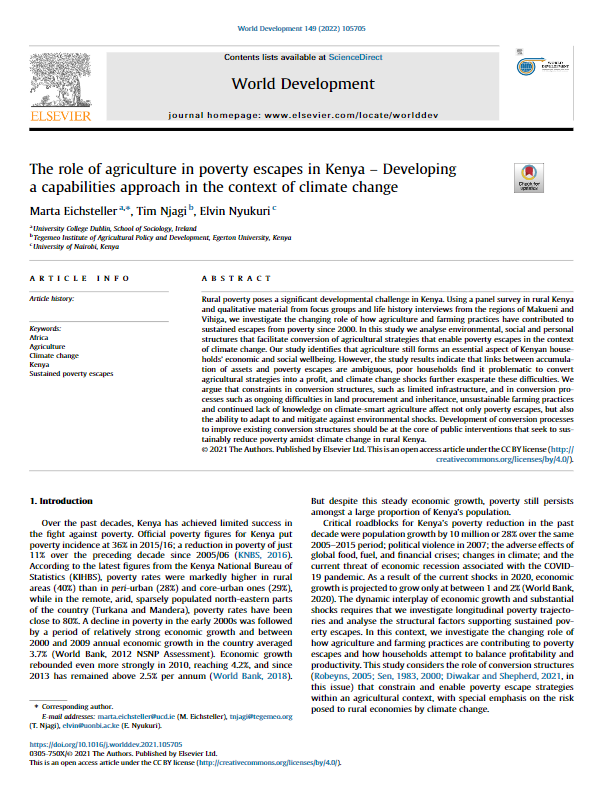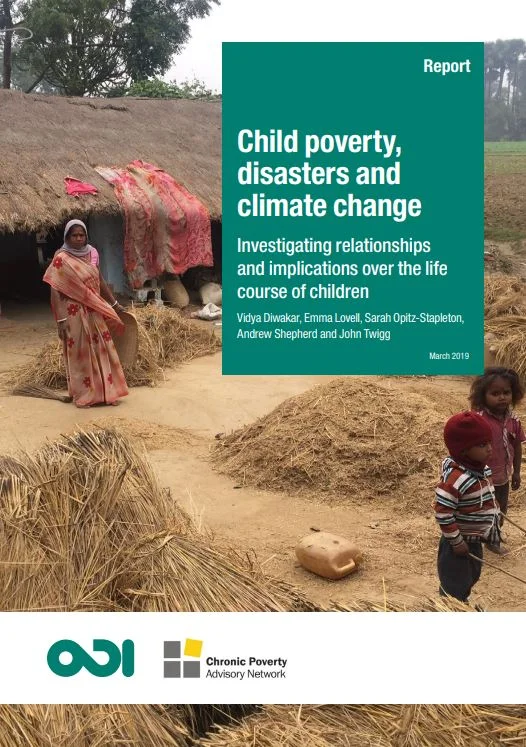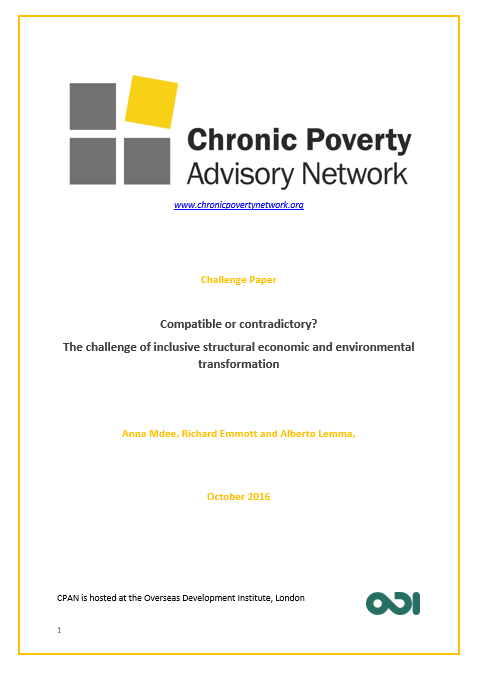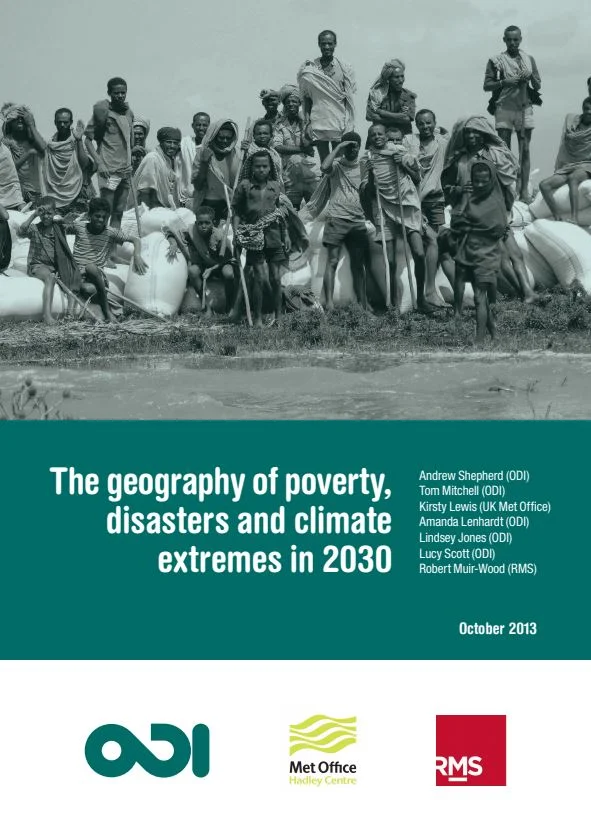This study examines the relationship between natural hazard-related disasters and child and adolescent poverty in India and Kenya. It explores these connections through a life cycle approach focusing on the incidence of child poverty and longer-term poverty dynamics and well-being. The analysis combines a range of different data-sets around household and child poverty, disasters and local climatology, brought together for the first time.
Climate change and natural hazards can reverse years of development gains, and can affect children and adolescents in different ways, both directly – through injury or the impact on household poverty or individual deprivation – and indirectly, through the effects on services and systems central to their well-being and longer-term development.
Poverty eradication policies and programming must be risk-informed to tackle chronic poverty, stop impoverishment, sustain poverty escapes and build adaptive capacities to support children’s development outcomes despite environmental shocks and stresses.
Authors: Vidya Diwakar, Emma Lovell, Sarah Opitz-Stapleton, Andrew Shepherd and John Twigg
Related products


